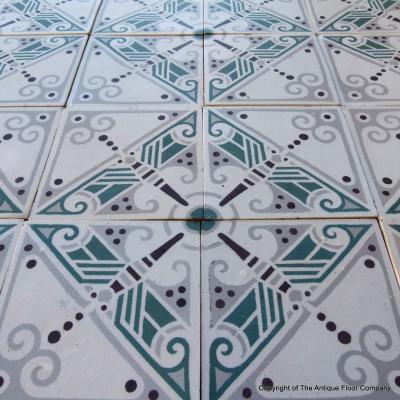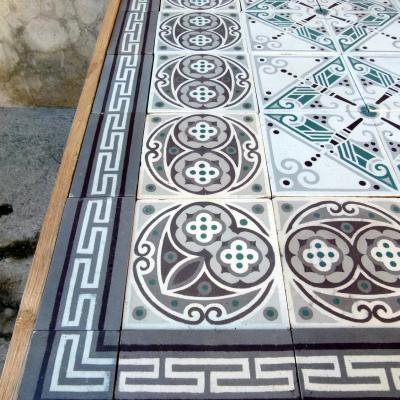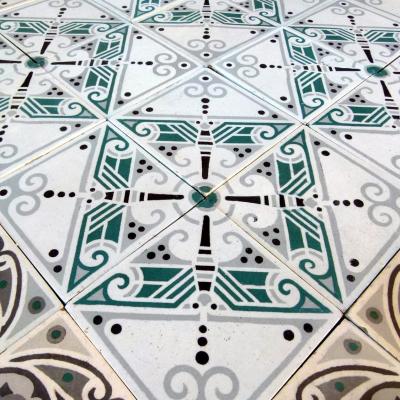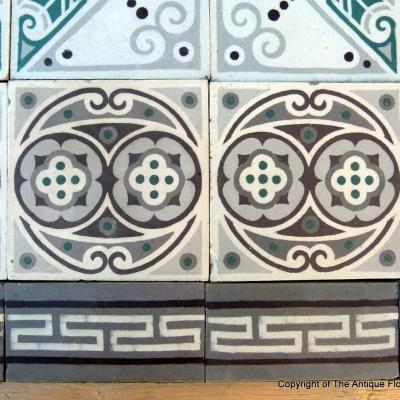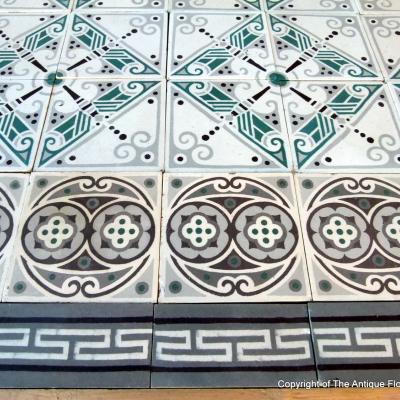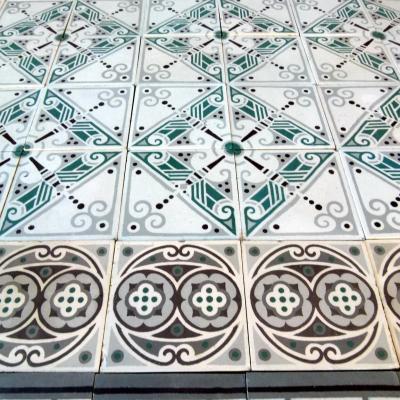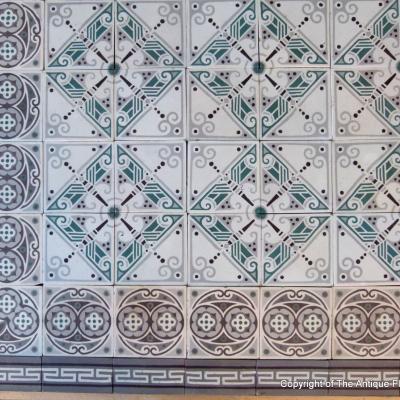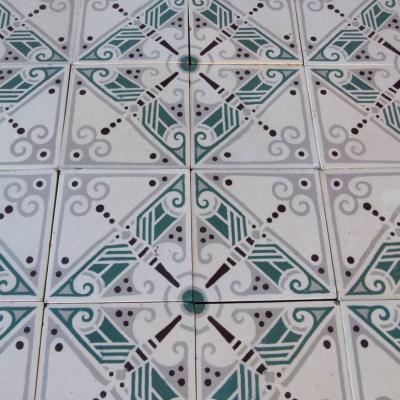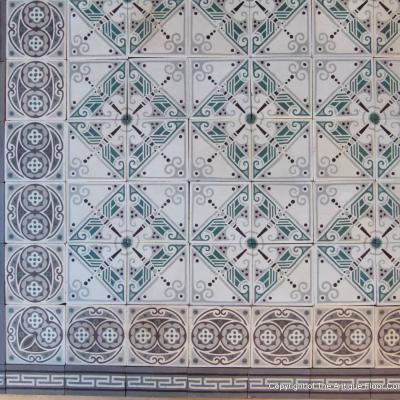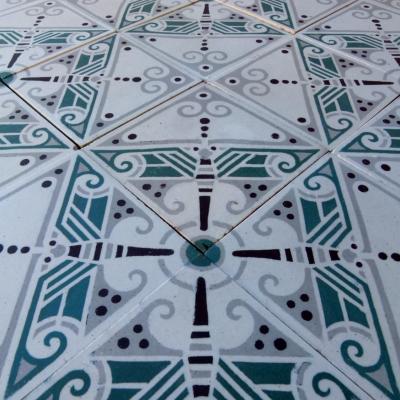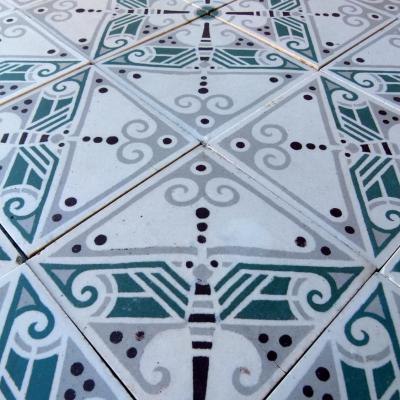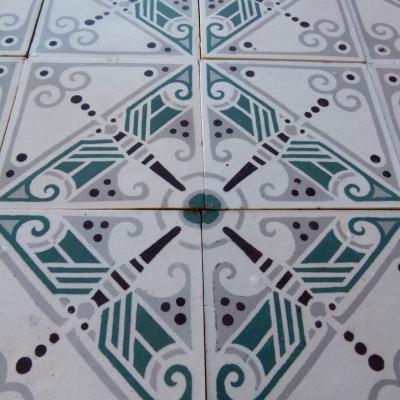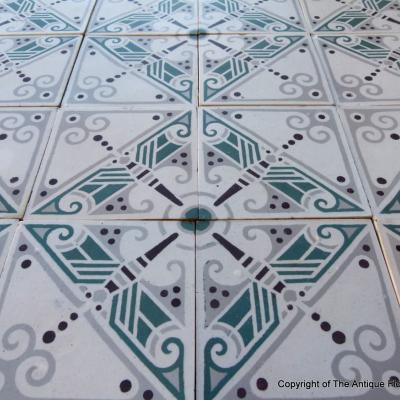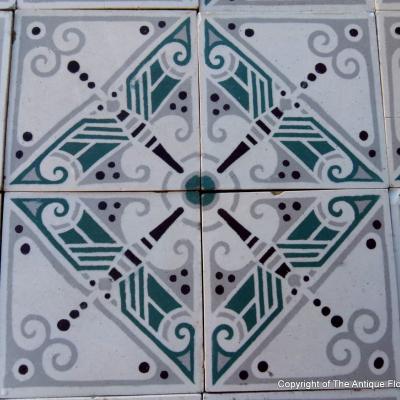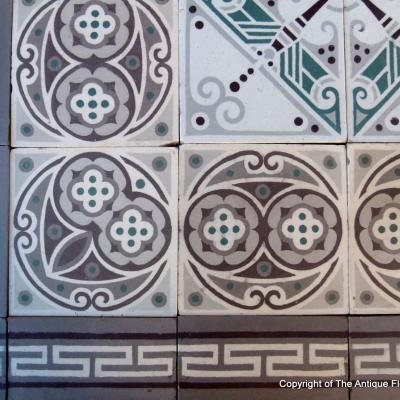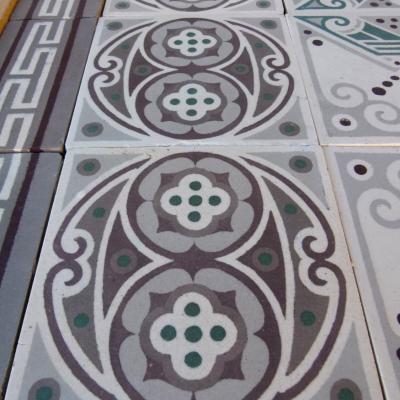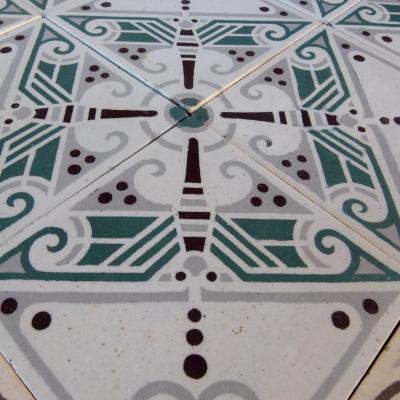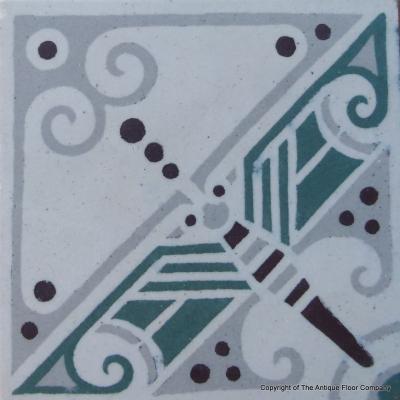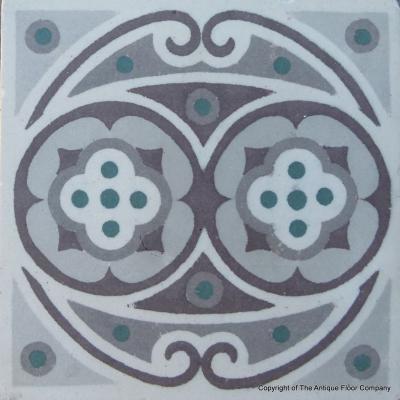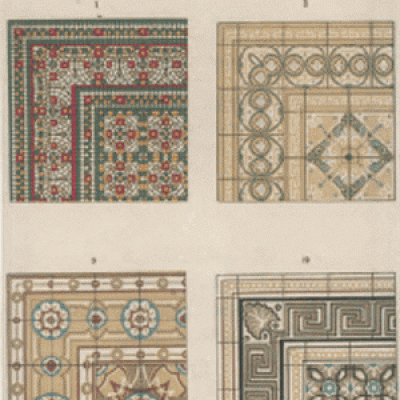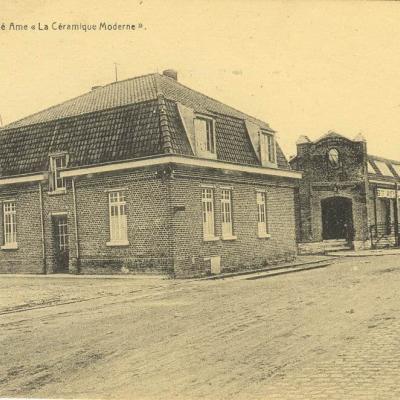An 18m2 early art deco Rebaix ceramic floor c.1918-1920
An 18m2+ / 194 sq ft Belgian ceramic encaustic floor with its original borders, one full size, one half size. The principal field and large border are 16cm sq and the half size 16cm x 8cm. All 4 large border corner tiles and 8 small border corner tiles have been reclaimed.
These handmade tiles, which are reverse stamped ‘R’, were manufactured by Societe Anonyme Ceramiques Modernes Rebaix and we would date them as c.1918-1920 as the company started producing 16cm sq. tiles immediately after WW1 before moving to 14cm sq. tiles a little later. In the photo gallery we have included a scan from a page in their period catalogue where in the top right panel the floor can be seen. The design is early art deco, as evidenced in the stylised dragonflies and this main tile, opening up in a four tile tessellation, is framed by a lozenged large border and a geometric small border.
The tiles have cleaned well, as a high-resolution section of a randomly selected 1.2m2 section of the floor shows in the gallery. Small edge nibbles and grout-able small chips are evident on an excellent ceramic 15mm thick. The palette is cool in shades of green, grey and white with charcoal piping. A highly fired tile it can be laid inside or outside of the home and will work efficiently with underfloor heating systems.
Tile quantities, give or take one or two:-
FIELD – 515 tiles –13.2m2 / 142 sq ft.
LARGE BORDER – 120 tiles plus 4 corners – 3.2m2 / 34.2 sq ft. – 19.8 linear metres / 65 linear ft.
SMALL BORDER – 120 plus 8 corners – 1.6m2 / 17.1 sq ft. – 19.8 linear metres / 65 linear ft.
NOTE
Antique tiles were most commonly made in single or two tile moulds. Before current computer automation methods their moulds were made my hand and the colour slips mixed by eye. Kiln temperatures could also be variable, as could the firing time. The result is that often tiles display subtle size and thickness variations and there can be tonal variations in colours, owing to the slip mixing and/or firing time. All of this makes these handmade tiles unique and adds to their charm. Some floors display their subtle variations in size and tones, some not, but when photographing we always take a random section of the floor so that it is representative of the whole. A tiler should always dry lay a section of the tiles to familiarise himself with them before starting to fix lay.
MAD106



